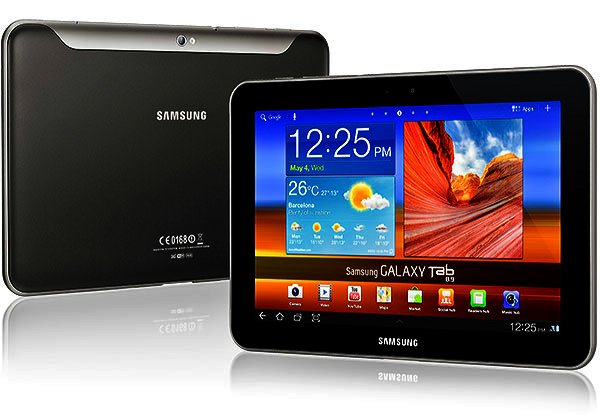
 We sat down with Paulo Ferreira, head of Mobile Product and Business Solutions at Samsung South Africa, to chat about the tablet and smartphone space and what we can expect for the foreseeable future.
We sat down with Paulo Ferreira, head of Mobile Product and Business Solutions at Samsung South Africa, to chat about the tablet and smartphone space and what we can expect for the foreseeable future.
If the quest to release the most tablets and smartphones in the shortest time could be likened to a battle, then Samsung would have been on an unrelenting warpath the past couple of months. Hot on the heels of the launch of the Galaxy Tab 10.1 locally, the electronics giant went on to announce a larger version of the coveted Galaxy S2 in the form of the Galaxy S2 LTE, another 8.9" tablet, and a number of new smartphones based on both Android and its own bada OS. This was followed by the announcement of the Galaxy Tab 7.7 and the Galaxy Note, a smartphone and tablet hybrid that will be joining a refresh of its first 7" tablet.
The really good news is that most, if not all of these devices will be coming to South African shores, in some cases, before they reach mature markets such as the US and UK.
The Road(map) ahead
With the both the original 7" and the new Galaxy Tab 10.1 tablets (pictured above) already in the market, September is expected to bring the 8.9" Galaxy Tab, which will feature similar specifications as the Galaxy Tab 10.1, besides from a slighter lesser battery life. Then, November will usher in the launch of a Galaxy Tab 7" Plus, which will be thinner than the existing model, boast a 1.2 GHz dual-core processor and Android Honeycomb 3.2.
This will then be joined by the newly announced Galaxy Note, a 5.3" smartphone and tablet hybrid that will offer the company's first Super AMOLED high definition screen, along with note taking capabilities via a stylus. More good news is that the Galaxy Tab 7.7 will then definitely be introduced locally at an as yet unconfirmed later date, perhaps in the first or second quarter of next year.
While it was initially slammed for the price of its tablets when compared to the iPad, Paulo Ferreira, the head of Mobile Product and Business Solutions at Samsung South Africa, explained that the company has to pay an additional import duty for devices that have voice capability. Even so, Ferreira promised that the company would make every effort to remain competitive, while also leveraging its relationship with mobile operators to ensure its devices offered added value through the inclusion of data bundles.
For those users concerned about the longevity of their device, Ferreira explained that the company would refresh its range once every year. However, its tablets and smartphones, which typically carried a two year warranty, would still be supported in the market with spares and accessories, as well as benefit from the presence of service centres across the country.
The Tablet Trend

According to Ferreira, the first question often asked when a new computing category is introduced, is what impact it will have on existing categories. He reported that the success of tablets had not yet eroded the market for netbooks or notebooks, but conceded that it could in future as tablet adoption continued to accelerate.
This seems rather inevitable, as the company had witnessed less resistance from customers towards adopting tablets, particularly as cellular operators were introducing attractive deals that reduced the cost of the device while accompanying them with competitive data packages. "While South Africa is slightly behind the US and UK in terms of tablet purchases, it is certainly accelerating at a pace we didn't expect, so a slow initial uptake has been superseded by a more aggressive, more informed adoption," he added.
Further helping the take up of Android-based devices locally was Google's prioritisation on the South African market. This had prompted the local release of numerous features, such as Google Maps Navigation beta, which offered free turn by turn navigation. Ferreira added that he expected more value added services to be introduced in a similar vein down the line, along with the addition of more Android apps, particularly those created specifically for the larger sized Honeycomb tablets. He continued what's particularly encouraging in this regard is the fact that Google is making a concerted effort to foster the local app development community. Through its workshops, developers were being equipped with the skills and expertise needed to create locally relevant apps, which users could in turn benefit from.
Continued in part 2